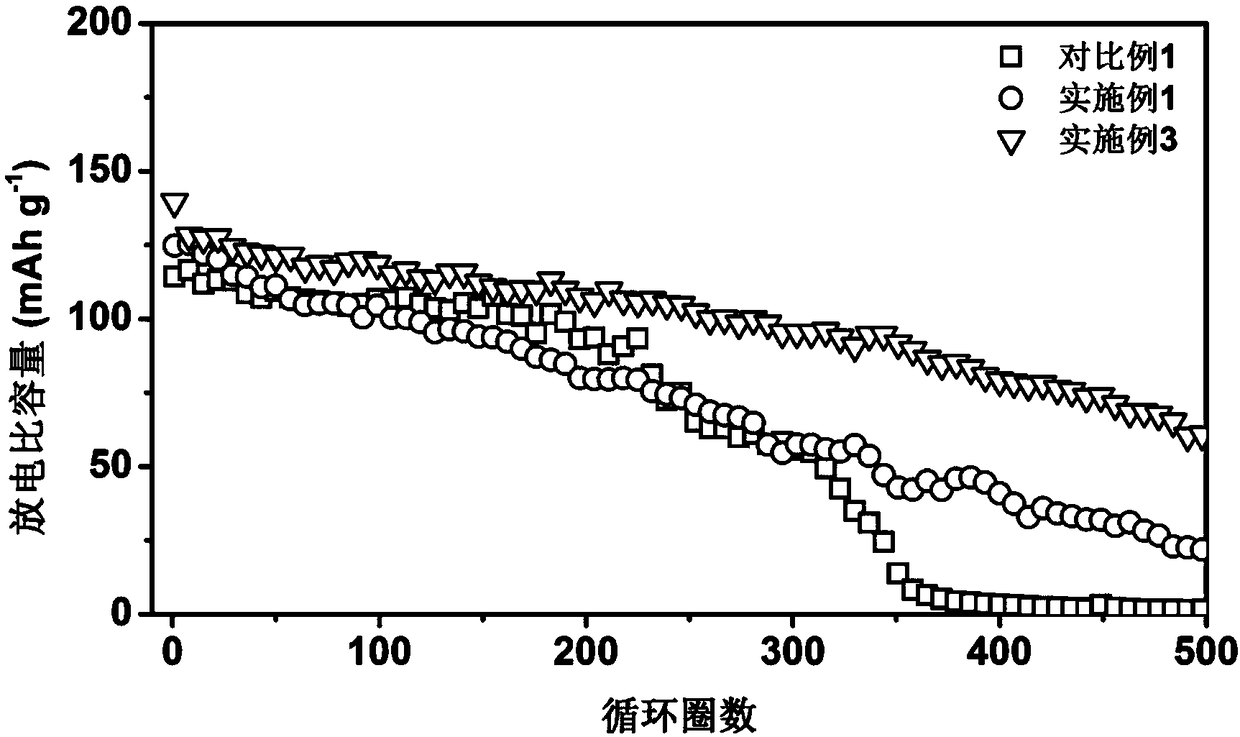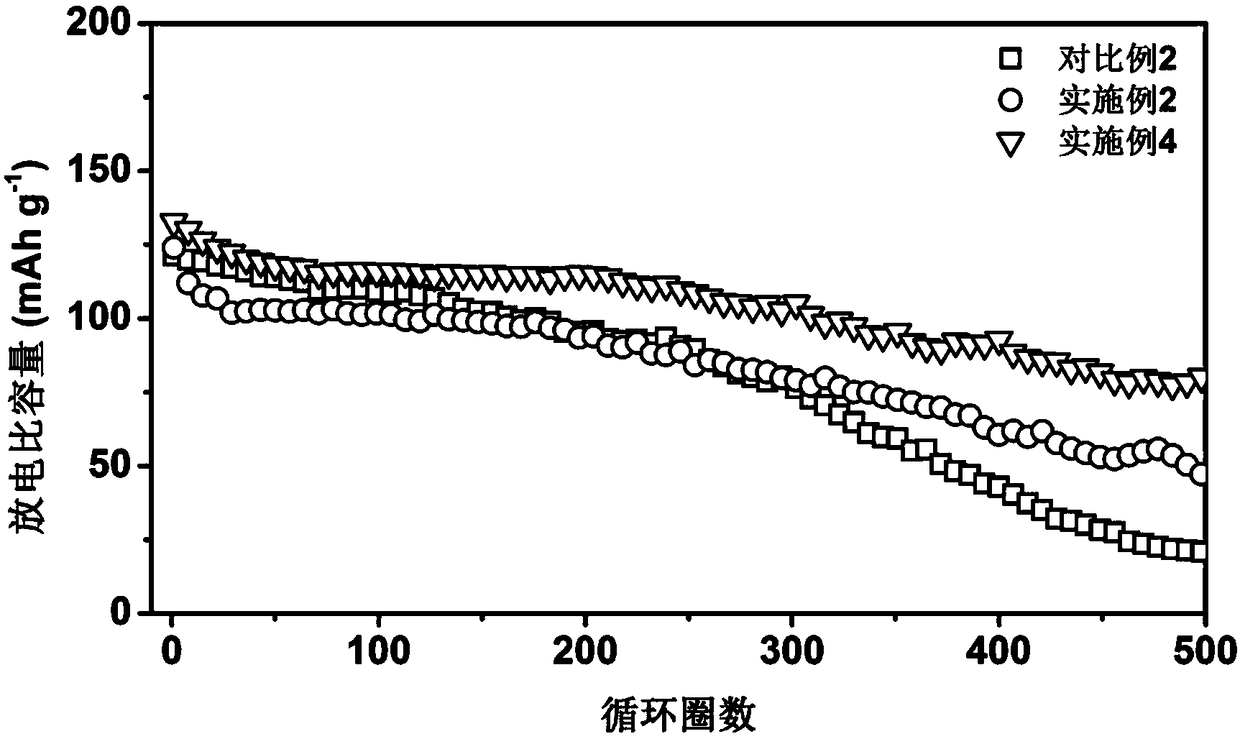Lithium battery with multiple network structures
A technology of network structure and lithium battery, applied in secondary battery, non-aqueous electrolyte battery, electrolyte battery manufacturing, etc., to avoid pulverization, reduce volume expansion, inhibit or weaken the effect of lithium dendrite growth
- Summary
- Abstract
- Description
- Claims
- Application Information
AI Technical Summary
Problems solved by technology
Method used
Image
Examples
Embodiment 1
[0027] In this example, see figure 1 and figure 2 , a lithium battery with a multiple network structure, including an electrolyte, a positive electrode, a negative electrode and a separator, the polymer of the multiple network structure exists in the electrolyte, the positive electrode, the negative electrode, the interface between the electrolyte and the positive electrode, the electrolyte and the positive electrode in an interpenetrating or semi-interpenetrating form The interface between the negative electrodes forms an interpenetrating or semi-interpenetrating microstructure through the binder composition.
[0028] The positive electrode is lithium cobalt oxide (LiCoO 2 ): acetylene black: the mass parts ratio of vinylidene fluoride (PVDF) is 80:10:10;
[0029] The negative electrode is a lithium metal negative electrode; the separator is a polyethylene separator, and the thickness of the separator is 14 μm;
[0030] LiPF in electrolyte 6 The concentration of (lithium...
Embodiment 2
[0035] This embodiment is basically the same as Embodiment 1, and the special features are:
[0036] In this embodiment, a lithium battery with a multiple network structure includes an electrolyte, a positive electrode, a negative electrode, and a separator, and polymers with a multiple network structure exist in the electrolyte, positive electrode, negative electrode, electrolyte, and positive electrode in an interpenetrating or semi-interpenetrating form. The interface between the electrolyte and the negative electrode forms an interpenetrating or semi-interpenetrating microstructure through the adhesive composition.
[0037] The positive electrode is lithium cobalt oxide (LiCoO 2 ): acetylene black: the mass parts ratio of vinylidene fluoride (PVDF) is 80:10:10;
[0038] The negative electrode is a lithium metal negative electrode; the separator is a polyethylene separator, and the thickness of the separator is 14 μm;
[0039] LiPF in electrolyte 6 The concentration of (...
Embodiment 3
[0044] This embodiment is basically the same as the previous embodiment, and the special features are:
[0045] In this embodiment, a lithium battery with a multiple network structure includes an electrolyte, a positive electrode, a negative electrode, and a separator, and polymers with a multiple network structure exist in the electrolyte, positive electrode, negative electrode, electrolyte, and positive electrode in an interpenetrating or semi-interpenetrating form. The interface between the electrolyte and the negative electrode forms an interpenetrating or semi-interpenetrating microstructure through the adhesive composition.
[0046] The positive electrode is lithium cobalt oxide (LiCoO 2 ): acetylene black: the mass parts ratio of vinylidene fluoride (PVDF) is 80:10:10;
[0047] The negative electrode is a lithium metal negative electrode; the separator is a layer-by-layer self-assembled ZrO2 / POSS nanoscale organic-inorganic hybrid modified polyethylene separator, and t...
PUM
| Property | Measurement | Unit |
|---|---|---|
| size | aaaaa | aaaaa |
| thickness | aaaaa | aaaaa |
| thickness | aaaaa | aaaaa |
Abstract
Description
Claims
Application Information
 Login to View More
Login to View More - R&D
- Intellectual Property
- Life Sciences
- Materials
- Tech Scout
- Unparalleled Data Quality
- Higher Quality Content
- 60% Fewer Hallucinations
Browse by: Latest US Patents, China's latest patents, Technical Efficacy Thesaurus, Application Domain, Technology Topic, Popular Technical Reports.
© 2025 PatSnap. All rights reserved.Legal|Privacy policy|Modern Slavery Act Transparency Statement|Sitemap|About US| Contact US: help@patsnap.com



